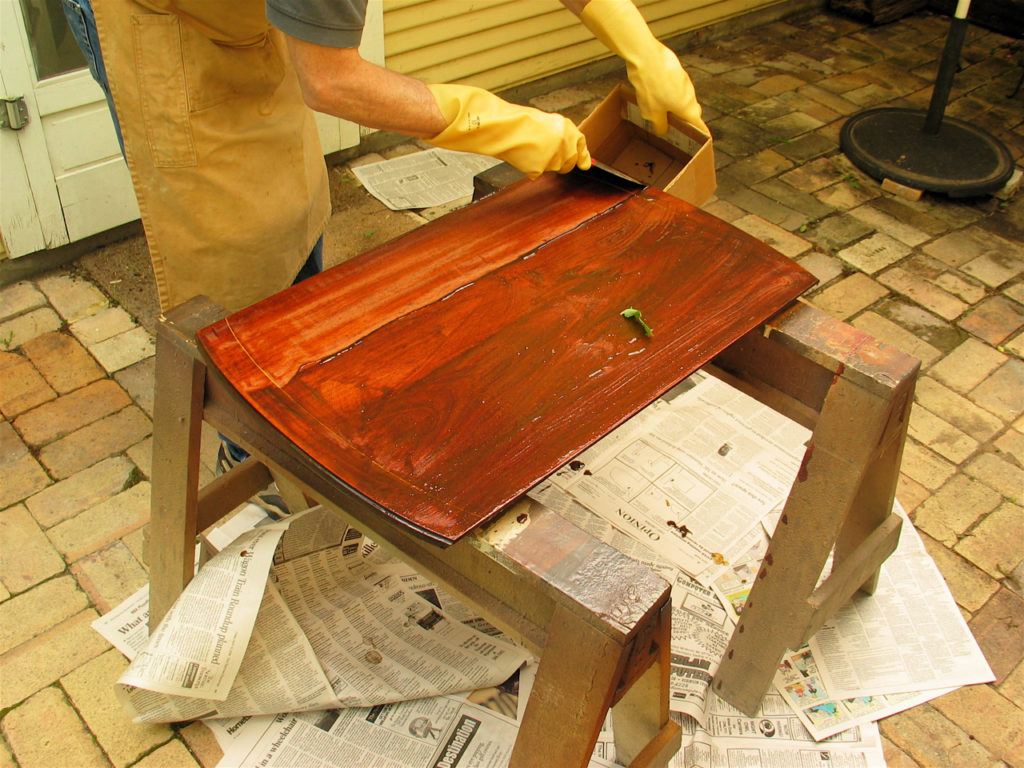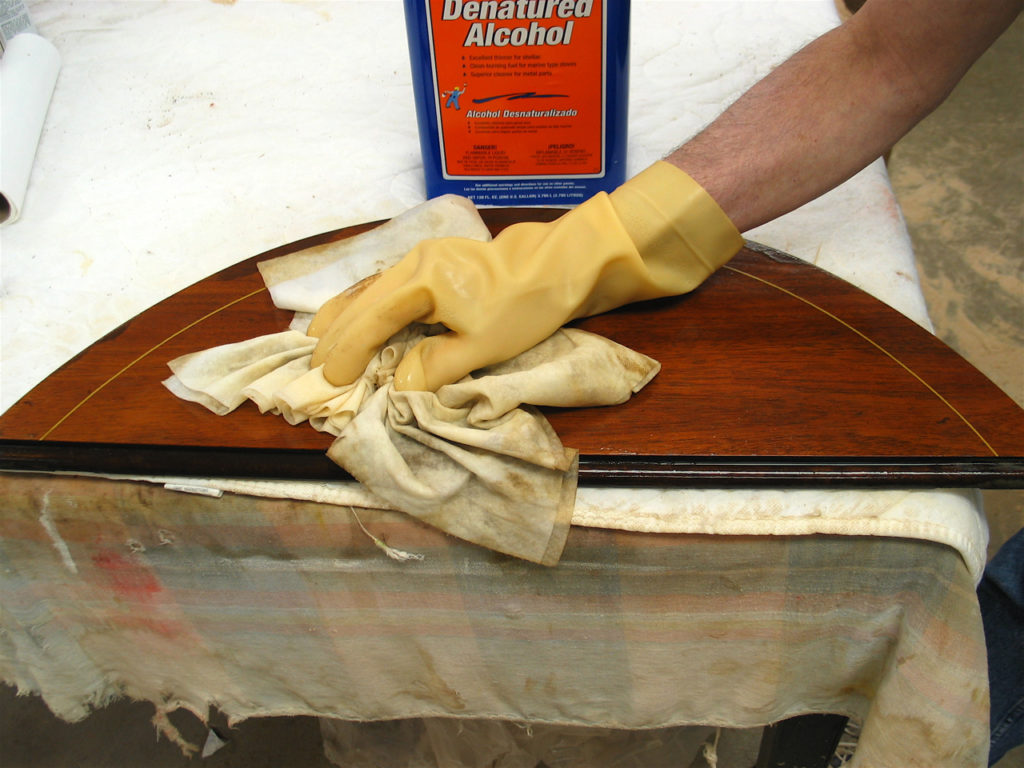We may receive a commission when you use our affiliate links. However, this does not impact our recommendations.

Stripping a finish is faster than sanding to remove it.
This is one I come across often. People tell me in one way or another, that they are going to sand off the finish or paint. So then I point out that stripping is faster, and in the case of paint could even be safer than sanding. It’s almost always better to strip than to sand.
To begin with, except in cases where the old finish is flaking off, it’s a lot more work to sand than to strip using a paint-and-varnish remover. (Or, for shellac or lacquer finishes I like using the solvent for the finish, denatured alcohol for shellac and lacquer thinner for lacquer).

With shellac and lacquer, I find it easy to use the solvent for the finish, in this case denatured alcohol, to strip the finish. Soak paper towels or rags spread over the surface with the solvent, then wipe off the finish when it dissolves.
But more importantly, sanding cuts through stain and patina (the color changes in wood caused by light and oxidation), and it does so unevenly. Once you start cutting through this coloring, you have to sand through it everywhere to get an even coloring for refinishing.
Stripping is messy, which is probably the reason many people chose to sand instead. But stripping is usually a lot less work, especially if you can be patient enough to give the stripper time to dissolve through to the wood. The overwhelming percentage of old finishes are either shellac or lacquer, and they dissolve and liquefy quickly. All you have to do to remove the sludge is scrape or wipe it off.
Stripping paint is usually more difficult, so being patient to give the stripper time to work is even more important. In addition, if the paint is over 40 years old, it may contain lead, which isn’t going to be a health problem if you strip it but could be if you sand it and fill the air with the sanding dust.
– Bob Flexner
Here are some supplies and tools we find essential in our everyday work around the shop. We may receive a commission from sales referred by our links; however, we have carefully selected these products for their usefulness and quality.








